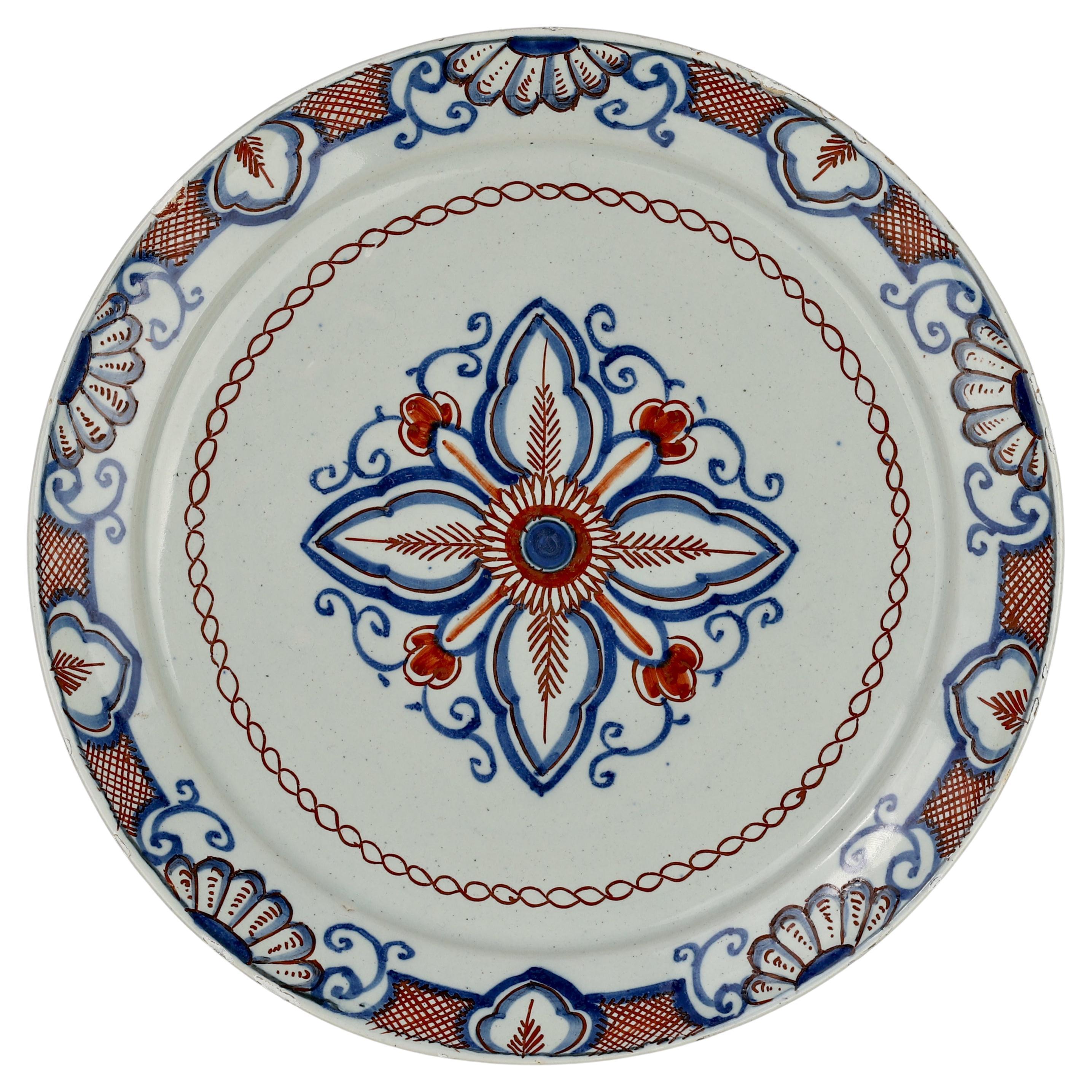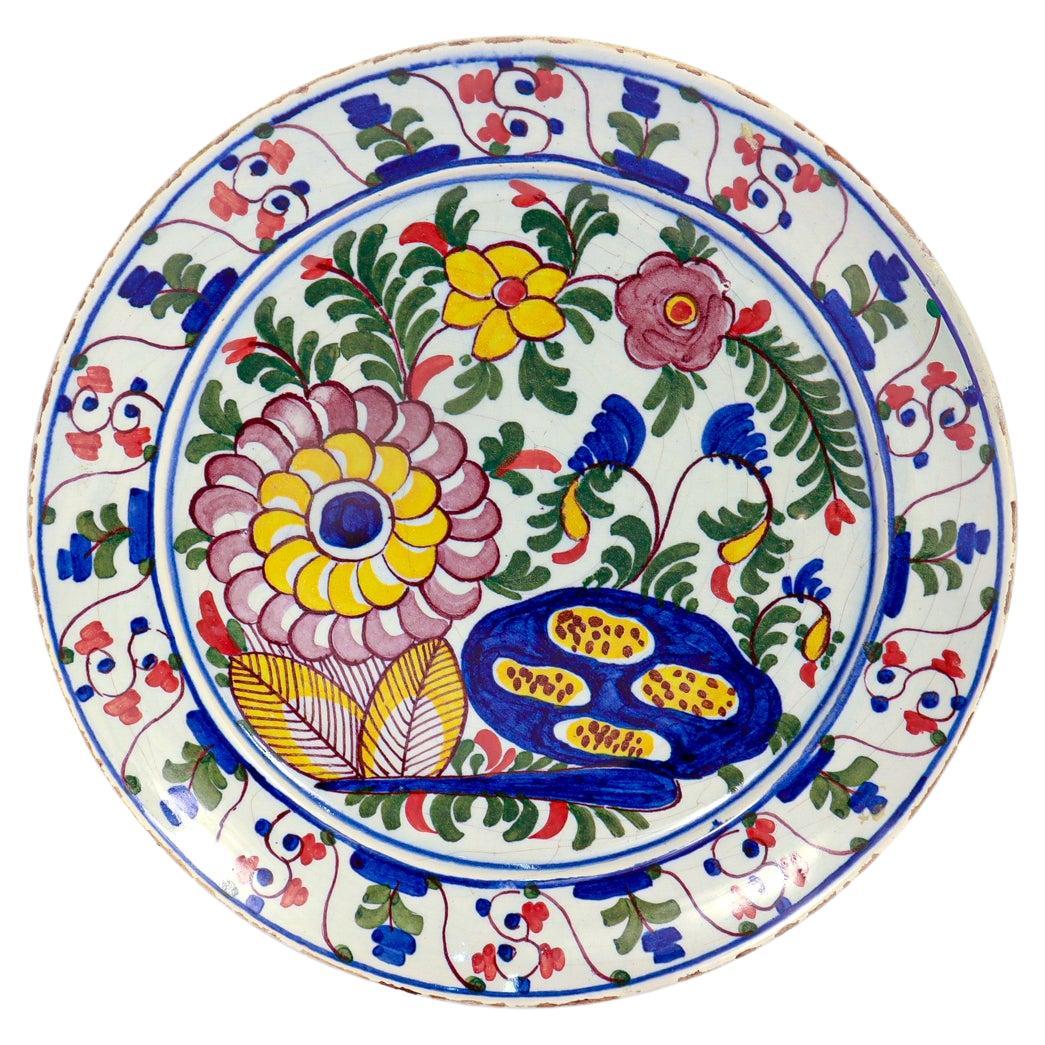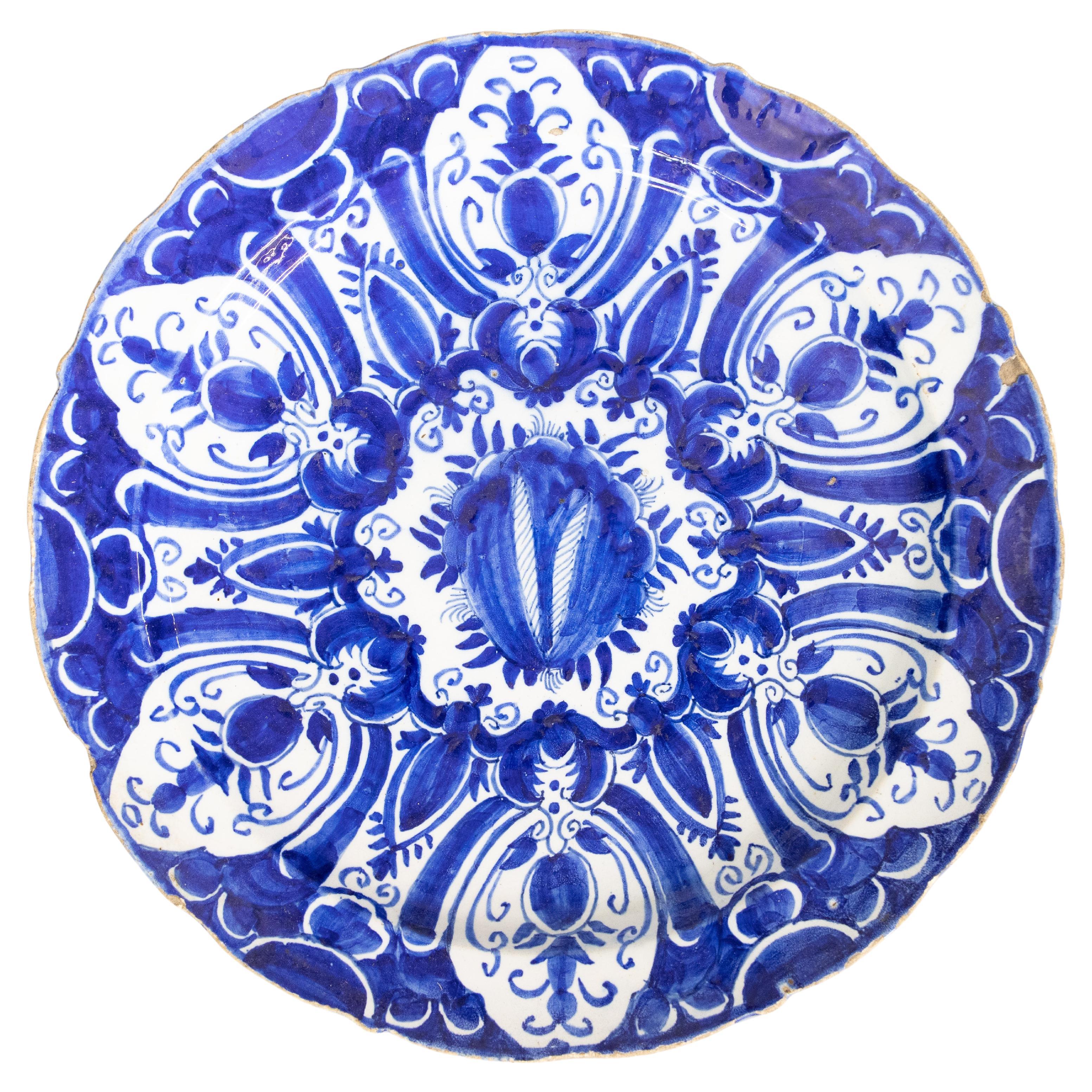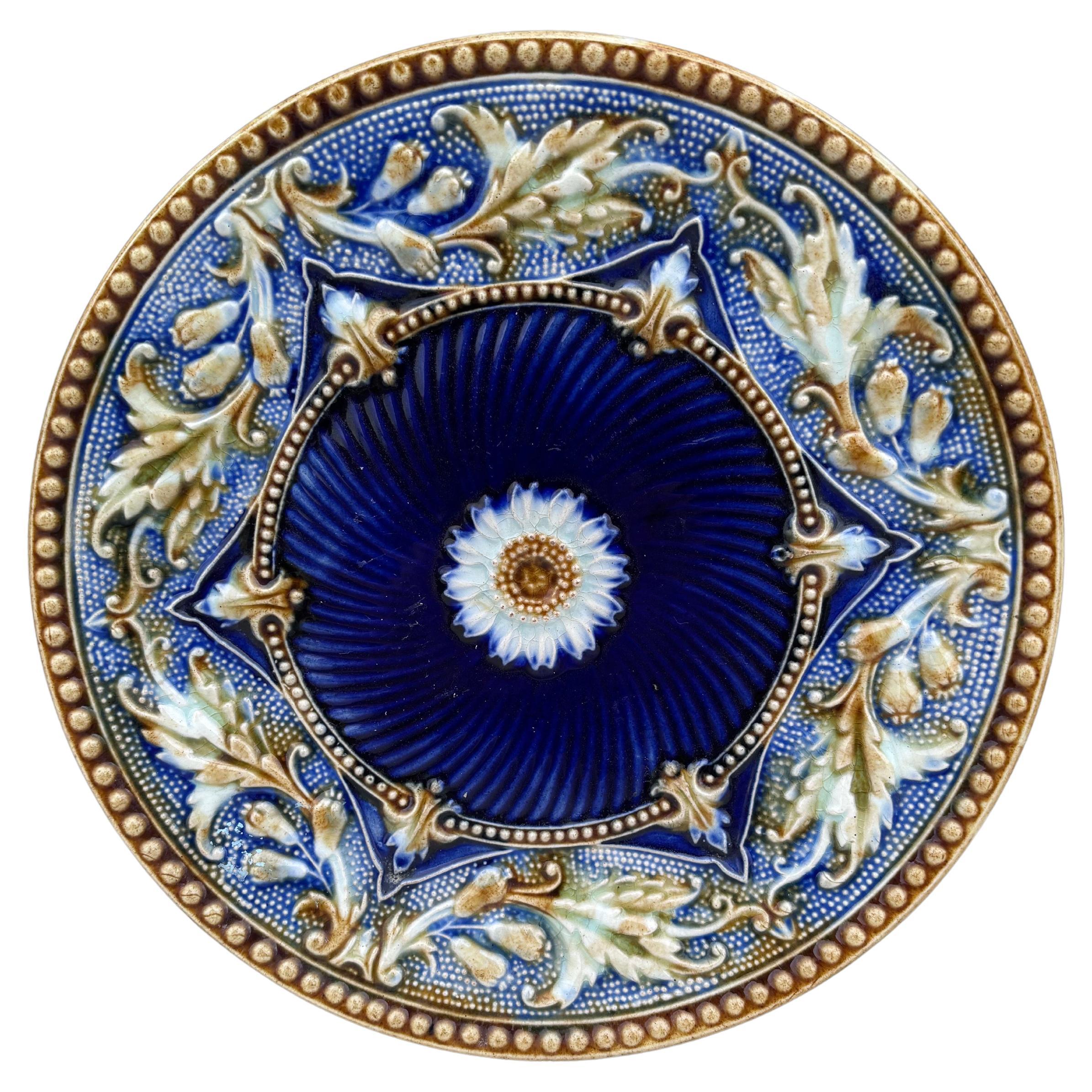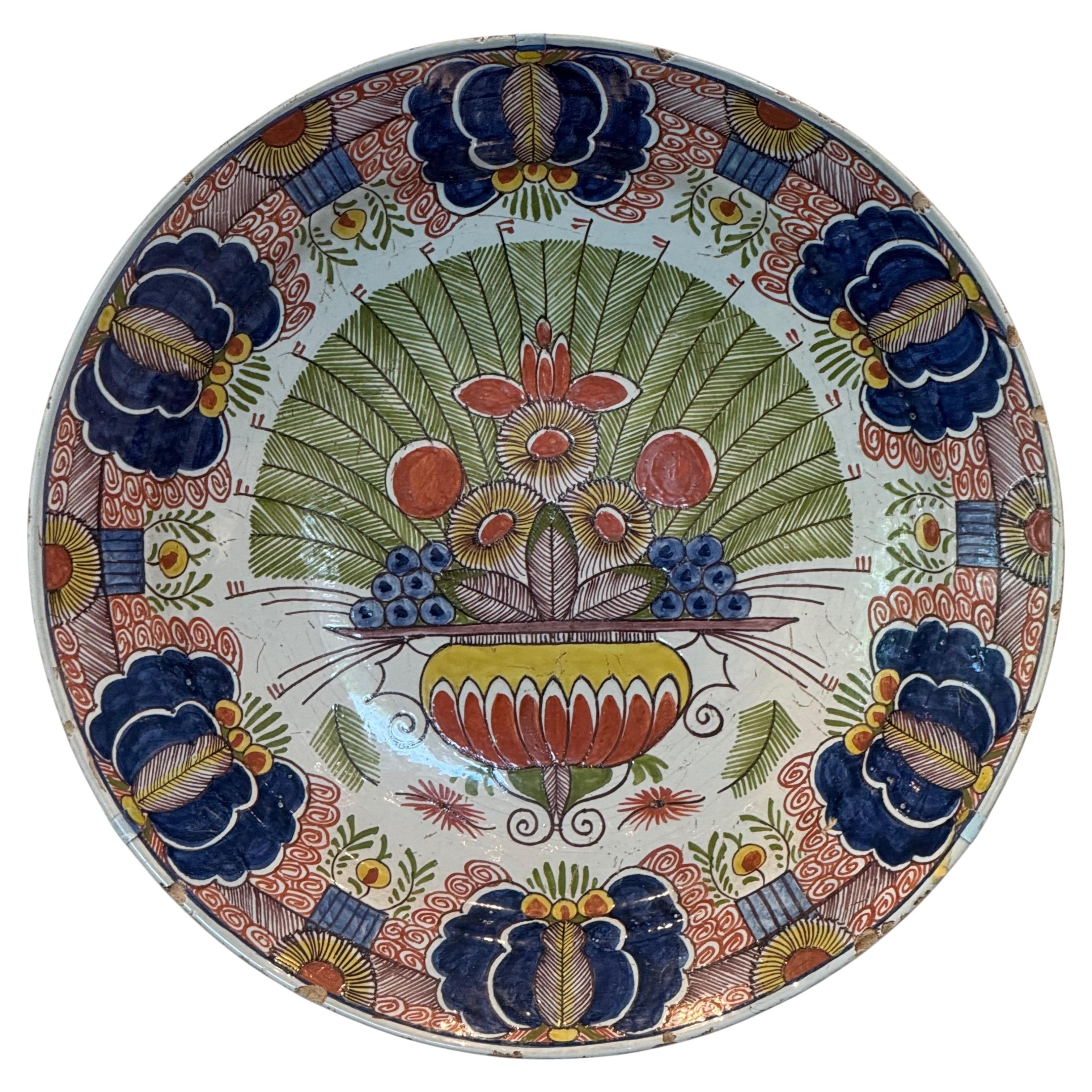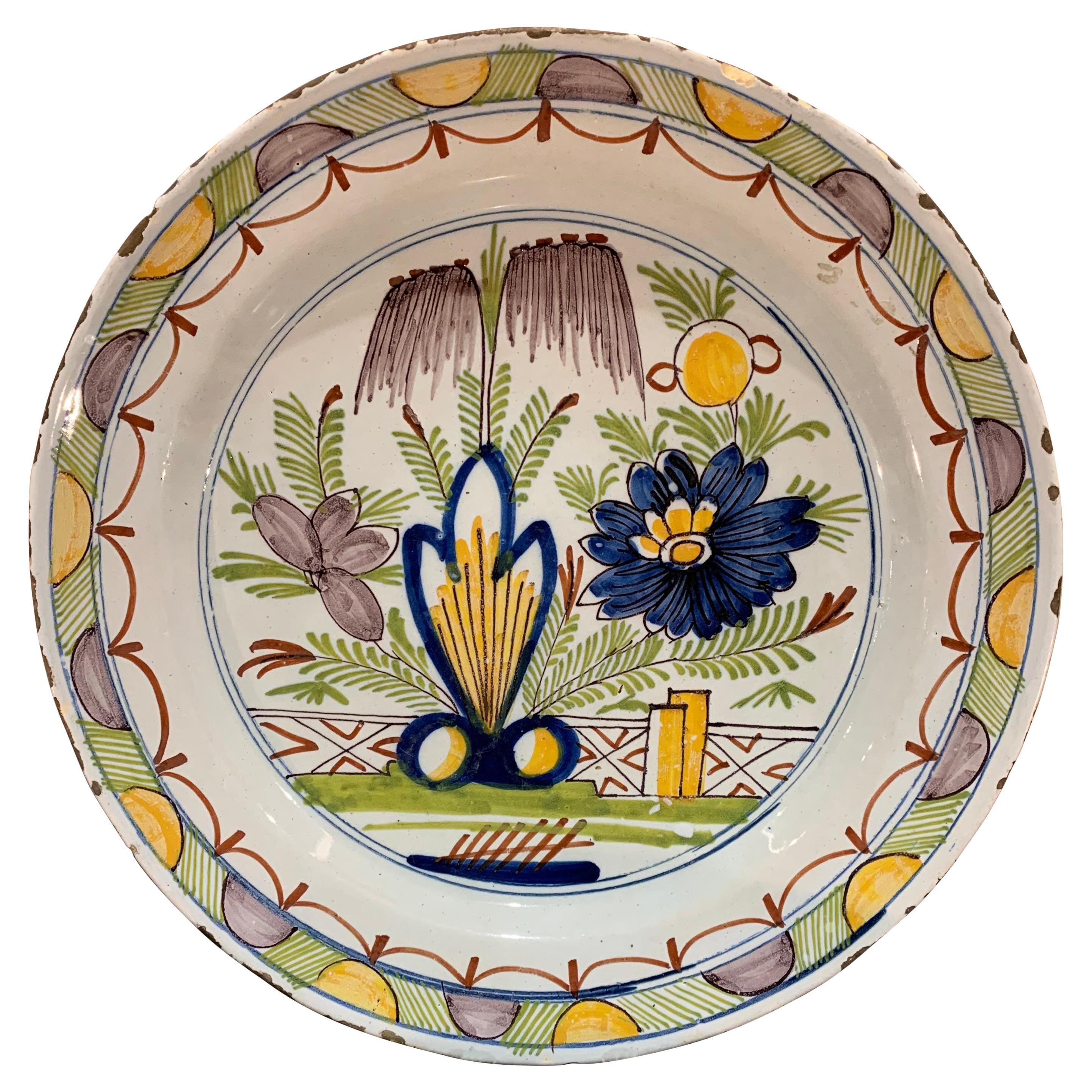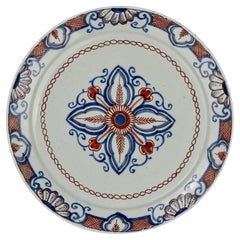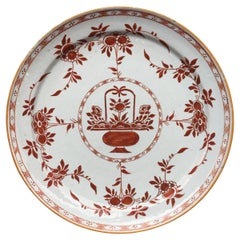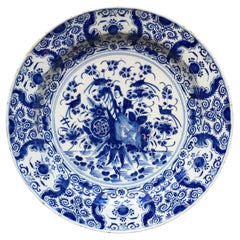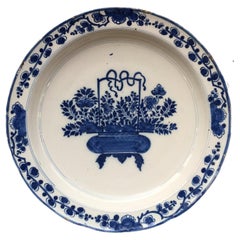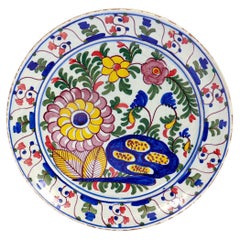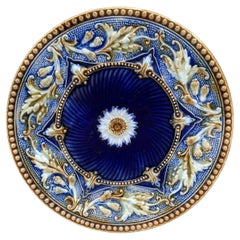Items Similar to Rare Dutch Majolica Plate with Tulip, Early 17th Century
Want more images or videos?
Request additional images or videos from the seller
1 of 5
Rare Dutch Majolica Plate with Tulip, Early 17th Century
$3,294.89
£2,452.38
€2,750
CA$4,513.18
A$5,019.64
CHF 2,621.10
MX$61,083.73
NOK 33,475.47
SEK 31,394.09
DKK 20,934.79
Shipping
Retrieving quote...The 1stDibs Promise:
Authenticity Guarantee,
Money-Back Guarantee,
24-Hour Cancellation
About the Item
A rare Dutch Majolica plate with a decoration of a tulip.
Northern Netherlands, probably made in the city of Rotterdam.
Made 1620 - 1640
Dutch majolica is one of the more rare ceramics known, especially in a condition where it is almost complete. Dutch Majolica is extremely rare to find in complete condition, most of the time parts are missing. That is because almost all pieces are from excavations. We think that an estimated only 200 pieces have been handed down over the centuries, of which most are in museum collections or foundations. This plate is 100% complete!
Besides that Dutch majolica is rare, it's also historical special: it's a new chapter in people's lives and a mixture of cultures. Majolica has something magical and a special attraction that makes you marvel. That’s how it’s for me, but so it should have been for the people in the first half of the 16th century when this luxury product was introduced for the first time. This product was exotic, innovative, and decorated in bright shining colors on a tin-glazed ground, in contradiction with the brown, yellow, and green lead-glazed ceramics which were common. Dutch majolica has been influenced by a lot of cultures. The main influences were the Spanish-Islamic culture and the Italian Renaissance. Later, it also has been influenced by the imports of Chinese porcelain.
This example still shows influences from the Italian Renaissance. The decoration of the border is copied from Italian ones. But the main decoration is contemporary. In this time period (1620-1640) we see scenes from daily life. Decorations of people, landscapes, fruits, animals, birds, and flowers. With a decoration of a flower, the tulip can be mentioned separately. The tulip has been frequently used as decoration since the introduction of this flower in the last quarter of the 16th century, as a symbol of status.
A wonderful example of decorative art from the late Dutch Renaissance.
- Dimensions:Height: 1.58 in (4 cm)Diameter: 10.04 in (25.5 cm)
- Style:Renaissance (Of the Period)
- Materials and Techniques:
- Place of Origin:
- Period:Early 17th Century
- Date of Manufacture:1620-1640
- Condition:Repaired: The plate has was broken into several pieces but is 100% complete! It has been professionally restored and put back together. No retouches have been made. Wear consistent with age and use. Minor structural damages.
- Seller Location:AMSTERDAM, NL
- Reference Number:1stDibs: LU6389227721812
About the Seller
5.0
Vetted Professional Seller
Every seller passes strict standards for authenticity and reliability
Established in 2017
1stDibs seller since 2022
10 sales on 1stDibs
- ShippingRetrieving quote...Shipping from: AMSTERDAM, Netherlands
- Return Policy
Authenticity Guarantee
In the unlikely event there’s an issue with an item’s authenticity, contact us within 1 year for a full refund. DetailsMoney-Back Guarantee
If your item is not as described, is damaged in transit, or does not arrive, contact us within 7 days for a full refund. Details24-Hour Cancellation
You have a 24-hour grace period in which to reconsider your purchase, with no questions asked.Vetted Professional Sellers
Our world-class sellers must adhere to strict standards for service and quality, maintaining the integrity of our listings.Price-Match Guarantee
If you find that a seller listed the same item for a lower price elsewhere, we’ll match it.Trusted Global Delivery
Our best-in-class carrier network provides specialized shipping options worldwide, including custom delivery.More From This Seller
View AllDutch Delft Plate with Flower, 18th Century
By De Klaauw
Located in AMSTERDAM, NH
City: Delft
Workshop: De Porceleyne Claauw
Owner: Johannes van Lokhorst
Date: 1713 - 1740
A fine polychrome plate with flower decoration.
Decorated with a border of leaves and...
Category
Antique Early 18th Century Dutch Delft and Faience
Materials
Ceramic, Faience
Dutch Delft Plate with Flower Basket, 18th Century
By De Grieksche A
Located in AMSTERDAM, NH
City: Delft
Workshop: De Grieksche A
Owner: Jan Theunisz Dextra
Date: 1758 - 1764.
Plate with decoration in iron red of a flower basket in a circle. Branches with flowe...
Category
Antique Mid-18th Century Dutch Delft and Faience
Materials
Ceramic, Faience
Large Dutch Delft Charger with Decoration of Lady Fortune, Early 18th Century
By De Porceleyne Bijl
Located in AMSTERDAM, NH
City: Delft
Workshop: De proceleyne Bijl (The porcelain Axe)
Date: circa 1730 - 1760
A fine blue and white plate with decoration of the Lady Fortune, holding a cornucopia, seate...
Category
Antique Mid-18th Century Dutch Delft and Faience
Materials
Ceramic, Faience
Large Dutch Delft Charger with Chinoiserie Flower Basket Design, 17th Century
Located in AMSTERDAM, NH
City: Delft
Workshop: Unknown
Date: circa 1700 - 1750
A fine blue and white plate with decoration of a Chinese flower basket.
Inspired on the Chin...
Category
Antique Early 18th Century Dutch Delft and Faience
Materials
Ceramic, Faience
Large Dutch Delft Charger with Chinoiserie Decor in Wanli Style, 17th Century
Located in AMSTERDAM, NH
City: Delft
Workshop: Unknown
Date: Last quarter of the 17th century
A large blue and white plate in Wanli / Tianqi style
Decorated with a...
Category
Antique Late 17th Century Dutch Delft and Faience
Materials
Ceramic, Faience
Dutch Delft Plate with Chinoiserie Design, 18th Century
Located in AMSTERDAM, NH
City: Delft
Workshop: De Metaale Pot (attributed)
Owner: Lambertus van Eenhoorn
Date: 1691 - 1724
An exceptional fine painted plate with chinoiserie decoration. On the left, we...
Category
Antique Early 18th Century Dutch Delft and Faience
Materials
Ceramic, Faience
You May Also Like
Antique 18th Century De Klaauw Dutch Delft Pottery Floral Plate
By Delft, De Klaauw
Located in Philadelphia, PA
A fine antique Dutch Delft pottery plate.
With a white porcelain ground richly decorated with blue, green, yellow and orange flowers and foliage.
With a brown underglaze De Klaauw ...
Category
Antique Early 19th Century Dutch Baroque Delft and Faience
Materials
Delft
18th Century Antique Delft Tulip Charger
Located in Pearland, TX
18th century Delft earthenware charger with blue and white stylized flowers, marked with a D on the reverse (probably Jan Theunis Dextra at the De Grieksche factory).
Category
Antique 18th Century Dutch Other Delft and Faience
Materials
Ceramic
19th Century French Majolica Plate
By Orchies
Located in Austin, TX
Rare blue French Majolica plate with flowers and acanthus leaves Orchies, circa 1890.
Category
Antique 1890s French French Provincial Dinner Plates
Materials
Ceramic
19th Century Delft Polychrome Charger
Located in Charlottesville, VA
Large hand-painted Delft charger, circa 1840, featuring a central floral arrangement in a stylized urn with radiating leaf motifs and a bold border of cobalt and rust blossoms. Vivid...
Category
Antique 18th Century Dutch Delft and Faience
Materials
Delft
18th-19th Century Polychrome Delft Platter
Located in Richmond, VA
18th-19th century polychrome delft platter.
Category
Antique 19th Century Dutch Delft and Faience
Materials
Earthenware
18th Century Delft Polychrome Charger With Floral and Scroll Motif
Located in Charlottesville, VA
Hand-painted 18th century Delft charger with a central stylized scroll surrounded by vibrant floral sprays. The border features alternating fruit and flower medallions with a rhythmi...
Category
Antique 18th Century Dutch Delft and Faience
Materials
Delft
More Ways To Browse
Dutch Renaissance Furniture
Glass Tulip Flowers
Italian Bird Plate
Dutch Tulips
Renaissance Majolica
Rare Antique Tins
Tulips Porcelain
Yellow Majolica Plates
Antique Dutch Tins
Islamic Plates
Chinese Green Glazed Animal
Chinese Tin
16th Century Spanish Silver
Italian Majolica Bird
16th Century Italian Majolica
Dutch Majolica
Spanish Majolica Plate
Majolica Tulip
